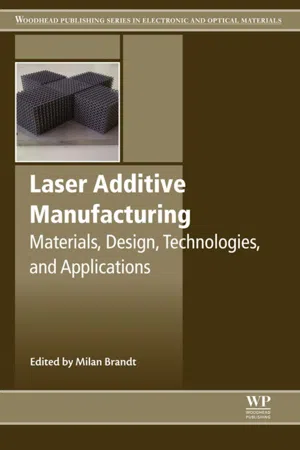
Laser Additive Manufacturing
Materials, Design, Technologies, and Applications
- 498 pages
- English
- ePUB (mobile friendly)
- Available on iOS & Android
About This Book
Laser Additive Manufacturing: Materials, Design, Technologies, and Applications provides the latest information on this highly efficient method of layer-based manufacturing using metals, plastics, or composite materials. The technology is particularly suitable for the production of complex components with high precision for a range of industries, including aerospace, automotive, and medical engineering.
This book provides a comprehensive review of the technology and its range of applications. Part One looks at materials suitable for laser AM processes, with Part Two discussing design strategies for AM. Parts Three and Four review the most widely-used AM technique, powder bed fusion (PBF) and discuss other AM techniques, such as directed energy deposition, sheet lamination, jetting techniques, extrusion techniques, and vat photopolymerization. The final section explores the range of applications of laser AM.
- Provides a comprehensive one-volume overview of advances in laser additive manufacturing
- Presents detailed coverage of the latest techniques used for laser additive manufacturing
- Reviews both established and emerging areas of application
Frequently asked questions
Information
Laser-aided direct metal deposition of metals and alloys
Abstract
Keywords
1.1. Introduction
1.1.1. What is direct metal deposition?
Table of contents
- Cover image
- Title page
- Table of Contents
- Related titles
- Copyright
- List of contributors
- Woodhead Publishing Series in Electronic and Optical Materials
- The role of lasers in additive manufacturing
- Part One. Processes, technology and materials
- Part Two. Design strategies and life cycle costs
- Part Three. Applications
- Index